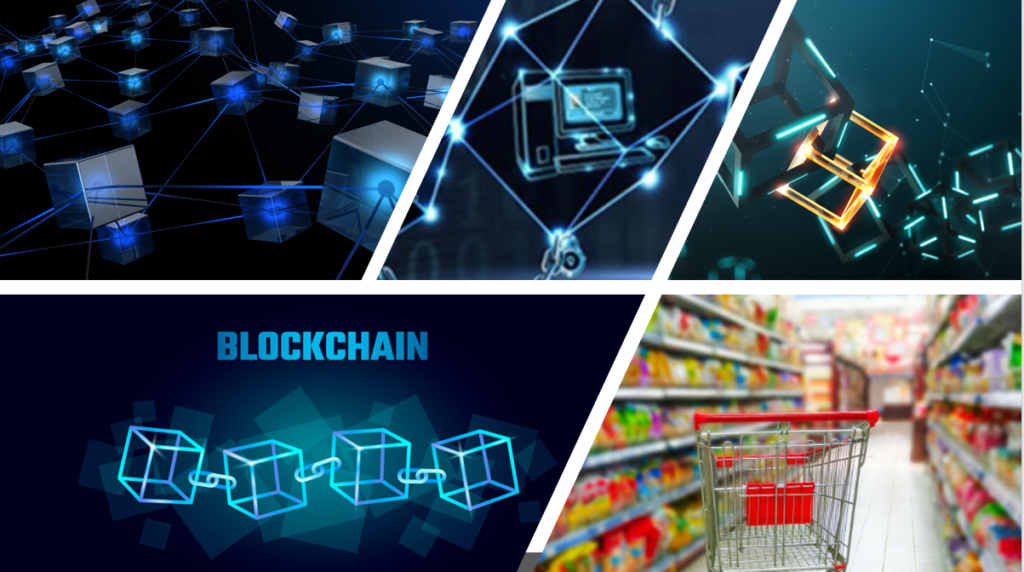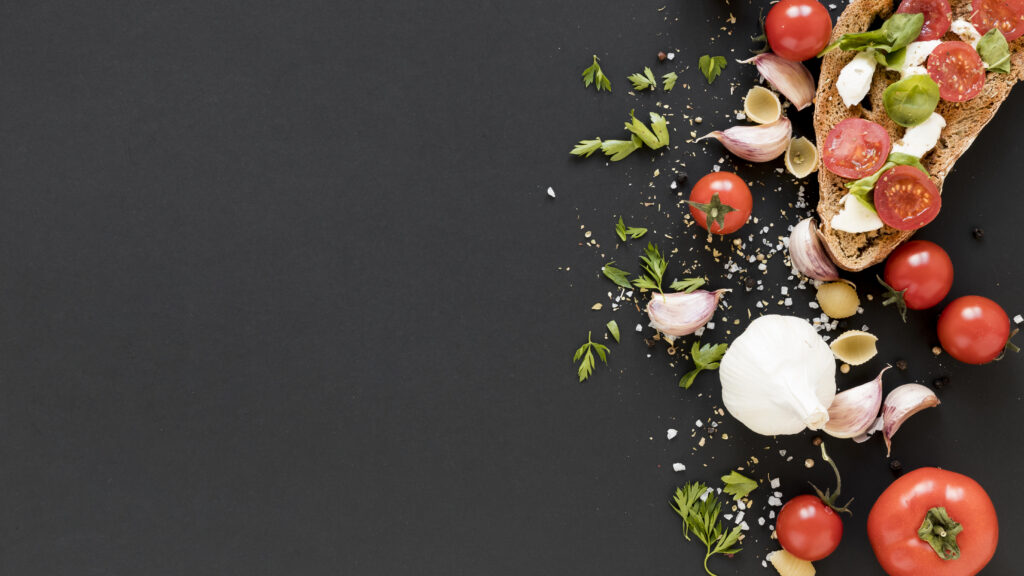
Applications of Blockchain Technology in the Food Industry
Authors: Sanjeev Kumar Sharma & Vinay Kumar Singh
This paper was first published in www.newfoodmagazine.com

We are living in a digital era and the technology of this digital world is changing rapidly. The interesting part of this digital revolution is that it directly or indirectly impacts each of us.
Whether there is a change in the smartphone technology leading to a revolution in the flow of information, or an advancement in online security thus changing the way we do banking.
In many cases, a piece of technology or system starts with solving one problem, but the more that is understood, the further its potential can grow.
For example, who would have thought that irradiation, initially designed for safe space food, would be used for food preservation or HACCP and become a basic requirement for the food industry?
Blockchain and the food industry
Blockchain is regarded as the next disruption in the technology world and is being studied in several applications, business sectors and processes. This includes the secure handling and storing of administrative records and digital authentication to strengthen intellectual property rights and patent systems, as well as bring transparency throughout the supply chain, reduce food frauds and enhance food safety.
Blockchain has established its unparalleled authority in the financial sector and now the food industry is looking at where it can be applied. We should also keep in mind that this technology is at its nascent stage and it may take more research and time before it becomes parts and parcel of the food industry.
The objective of this article is to introduce Blockchain Technology in common language and share some examples from the world where its application in the food industry is under study.
What is blockchain technology?
In basic terms, a blockchain is a digital distributed ledger, maintained by a network of multiple computing machines. It stores data in the form of blocks that are cryptographically secured and immutable.
The blockchain is the brainchild of a person or group of people known by the pseudonym, Satoshi Nakamoto. It was first reported in 2008 and since then, has become very popular among the ‘IT fanatics’.
Unique features of blockchain
Decentralised
Unlike the current internet system, there is no single server where entire information is stored. These data are saved as copies in different computers (called nodes in the blockchain world) and there is no central authority supervising anything. These computers are connected to the blockchain network. Due to this distributed copies of data (transaction), blockchain is also known as a distributed ledger.
Trustless
Trustless should not be confused with ‘not trustworthy’. Blockchain provides such a transparent environment that one need not to have a third-party to mediate or enhance trust between two parties involved in transaction.
Transparent
This should not be misinterpreted as violating privacy. The identity of parties involved in a transaction is hidden via complex cryptography and represented only by their public address (code). While the identity is secure, all the transactions that are carried out by public address are accessible. This level of transparency enhances trust in the system while securing privacy.
Immutability
Any data entered in blockchain cannot be modified/tampered with in the future. This immutability feature of blockchain has made it so popular that it is being explored in all the sectors where data integrity and data protection is of utmost importance.
Basic structure of blockchain
Blockchain is a process of passing information from stage one to stage two in a process, which takes places in a fully automated and safe environment.


Figure 1: Pictorial depiction of flow of information in current server network and blockchain network
Within the food supply chain there are different participants involved in each step, from farmers, to processors, manufacturers, certifying agencies, government agencies, logistics, distributors, retailers and so on.
Each of these participants shares critical information about the product that sits in their own local server. This information is not accessible to other participants and thus, there is an increased chance of food fraud in the system.
If a consumer wants to buy organic tomato ketchup, they rely on the label claim. The manufacturer of ketchup relies on the supplier of tomato puree or concentrate processor.
The tomato processor relies on the claim/organic certification furnished by the farmer or farmer association. If any of the participants provide a false claim, both the consumers and other participants are cheated.
Blockchain provides a secure environment where each of the participants in the blockchain network has access to each data and these data, once entered and verified, cannot be modified.
For example, a farmer that provides an organic food certificate, which is verified by an authorised agency, cannot have that certificate tampered with at later date.
Understanding immutability of blockchain
Information or data provided by each participant referred to as a transaction forms a block. This block is verified by thousands, perhaps millions, of computers distributed around the blockchain network.
The verified block is added to a chain, which is stored as multiple copies across the net. This creates a unique record with a unique history. Modifying a single record would mean modifying the entire chain and in millions of computers (nodes), which is practically impossible.
This unique property of blockchain is due to the cryptographic hash function. In simple terms, hashing means converting all input data (information) or any length to a fixed-length coded output.
Interestingly, even if we make a small change in input, the changes that will be reflected in the hash will be huge. Figure 2 is an example of a hash created using the SHA-256 algorithm.
You can see only changing ‘P’ from capital letter to a small letter, changes the hash drastically. It should be also noted that irrespective of the size of input text/information, the length of the hash remains same.
| Input | Hash |
| Tomato Puree | fba8d76ce672034611034b47dfb44e2a051b3efefed5c98fa5bcd93d04052fb0 |
| Tomato puree | 2de11dbbe1a285a63334696df0f4be1e3d529710b60308646305c5a978eae3f3 |
Figure 2: Example showing how “Hash” changes drastically with slight change in input
In blockchain, each block (information/input) is linked to another block that contains data and a hash of the data inside the previous block. So, any change in data at any stage/block will change the hash drastically, therefore causing an avalanche effect disturbing the entire blockchain.
You can correlate it with a genetic mutation. In point mutation, a single change in nucleotide pair can change entire genetic makeup. A slight change in information would change the entire blockchain and as these are saved as several copies in the network, it cannot be practically done.
To understand data input at different stages of the supply chain, blocks and hash and blockchain refer to a pictorial explanation in Figure 3. To depict the hash of the block, the colour of the block and its hash in the subsequent block is kept the same.

Figure 3: Pictorial depiction of information forming blocks are every stage of supply chain. The data from each block is converted to hash which becomes part of next block
Application of blockchain in food industry
Blockchain, when integrated with the latest technologies for data capturing, has huge potential in the food industry. Building on the respective strengths of blockchain and the Internet of Things (IoT), we can revolutionize the food industry.
IoT solutions link the physical and digital worlds, capturing data like temperature and humidity during transportation or storage of product. Blockchain provides a secure and an immutable platform where this data can be stored and accessed by every participant in the supply chain.
In its latest report, ‘Key Vertical Opportunities, Trends & Challenges 2019-2030’, Juniper Research shows that blockchain used with IoT sensors and trackers will have several advantages. These are –
- It will streamline the supply chain, reducing retailers’ costs
- It offers simpler regulatory compliance
- It will enhance and expedite the food recall process
- It will enable $31 billion in food fraud savings globally by 2024
According to the 2018 policy paper by the Food and Agriculture Organization of the United Nations (FAO), blockchain could dramatically transform the food supply chain in India.
As per the policy paper, blockchain technologies can help in building an immutable contract between the various players in supply chain, enabling further transparency in the system.
A smart contract can reduce the number of intermediaries in the supply chain network. These smart contracts can reduce transaction costs, improve margins and increase efficiency, and as a result, transfer a large chunk of profits to the farmer/producer.
There are several IT giants who have made different blockchain platforms or solutions to the food industry. A few examples include Food Trust and Watson platforms by IBM, Track and Trace, and Leonardo platforms by SAP, Track and Trace, and Internet of Things solutions by Oracle.
Below, we have compiled several examples from different food industries where blockchain has been or is planning to be used in pilot-scale to bring transparency in the supply chain network and gain consumer trust.
- The Sustainable Shrimp Partnership (SSP) has collaborated with IBM to use its Food Trust ecosystem to provide complete traceability of SSP shrimp for their consumers. Food Trust provides a safe and secure platform where data can be uploaded and shared.
This will help to verify the authenticity of product claims. In this case, data related to the shrimp production will be uploaded onto the blockchain which can be accessed by the retailers and consumers at every stage of the process.
This platform will also ensure verification of the shrimp’s SSP qualification, eg, it is adhering to the Aquaculture Stewardship Council (ASC) Standard and is antibiotic-free. - Nestlé collaborated with OpenSc, a blockchain platform, to trace milk from farms and producers in New Zealand to Nestlé factories and warehouses in the Middle East.
This is the pilot project, but a big step that demonstrates the company’s commitment towards transparency. Nestlé wants its consumers to make informed decisions, so they want to utilise blockchain technology to share reliable information with consumers.
OpenSc platform is founded by WWF-Australia and The Boston Consulting Group Digital Ventures. Interestingly, in 2017, Nestlé introduced blockchain technology in the IBM Food Trust platform and gave access to its consumers the data related to Mousline purée in France. - Nestlé and Carrefour collaborated to use IBM Food Trust platform for their GUIGOZ Bio 2 and 3 infant milk range. The companies want to boost consumer confidence by providing transparency on their product – GUIGOZ Bio 2 and 3 packaging.
This transparency in the supply chain further increased the benchmark for Nestlé and Laboratoires Guigoz, to ensure a high standard of care for high the quality of their products. - Cermaq salmon and Labeyrie came together to utilise the IBM Food Trust platform to ensure traceability and transparency in their supply chain.
They are aiming at providing information about the fish; its origin, its hatching time and date, breeding conditions, its length, time of its transfer to seawater, the kind of vaccination it was given, etc.
Labeyrie, a leading brand of smoked salmon in France, is using blockchain technology for two of its Norwegian smoked salmon products.
They are building transparency in the system by giving the consumers the opportunity to access all important information. By scanning the QR code present on the package, the consumers can get access to the entire information of the product. - El Ordeño, one of the milk processors from Ecuador, adopted IBM Food Trust to bring transparency and reduce food waste. Through the QR code present in its TRU milk products, El Ordeño wants its consumers to get access to the information about the path that its TRU milk has travelled before it reaches them, from producer to quality centres, cold chains and distribution centers. The plan is to scale the solution to all its dairy products.
- Organo corporations is implementing IBM Food Trust, to selectively share key information about Organa products with consumers, supply partners, commerce partners, distribution partners, etc.
The business wants to ensure transparency, but at the same time, ensure a highly secured environment. Through this transparency, it is, ultimately, looking to build partner and consumer trust in every Organo product. - The Malaysian Palm Oil Council (MPOC) has collaborated with BloomBloc to implement blockchain technology to enhance accountability and traceability. It has developed a blockchain mobile app and web interface to trace palm oil throughout its supply chain.
Using a smartphone, each tree and related information, as well as other information of additional checkpoints, are uploaded into the system. This automatically creates an end-to-end digital database, enhancing transparency, accuracy and credibility for stakeholders and end customers.
Conclusion
Blockchain is a promising technology with multidimensional benefits. If used along with the IoT, we can establish a transparent supply chain of food, reduce food fraud and build consumer trust.
There are already many companies who are experimenting with this new technology and these trials will further build the capabilities of the Blockchain Technology and make it economically viable also to be accepted by the majority of food processors in coming years.
In order to bring this technology to the mainstream of the processed food world, food processors, supply chain participants, government authorities, and IT experts have to come together to build a comprehensive plan to implement Blockchain Technology.
References
Research papers
- A systematic review of consumer perceptions of food fraud and authenticity: A European perspective I Trends in Food Science & Technology 94 (2019) 79–90
- A review on blockchain applications in the agri-food sector I Journal of Science of Food Agriculture 2019; 99: 6129–6138
- Blockchain and more – Algorithm driven food traceability I Food Control 105 (2019) 45–51
- Food traceability system from governmental, corporate, and consumer perspectives in the European Union and China: A comparative review I Trends in Food Science & Technology 99 (2020) 402–412
Websites and blogs
- https://blockgeeks.com/guides/what-is-blockchain-technology/#Who_Will_Use_The_Blockchain?
- https://btcmanager.com/india-food-industry-seeks-blockchain-based-supply-chain/?q=/india-food-industry-seeks-blockchain-based-supply-chain/&
- https://www.foodonline.com/doc/producers-market-to-join-with-ibm-food-trust-to-advance-food-traceability-0001
- https://arxiv.org/ftp/arxiv/papers/1908/1908.07391.pdf
- https://www.foodbev.com/news/malaysian-palm-oil-industry-adds-blockchain-technology-to-improve-traceability/
- https://www.foodonline.com/doc/shrimp-tastes-sweeter-with-blockchain-based-traceability-0001
- https://www.foodonline.com/doc/nestle-and-carrefour-apply-blockchain-technology-to-infant-nutrition-for-the-first-time-0001
- https://www.foodonline.com/doc/cermaq-contributes-to-traceability-with-blockchain-0001
- https://www.foodonline.com/doc/nestle-breaks-new-ground-with-open-blockchain-pilot-0001
- https://www.ibm.com/blockchain



